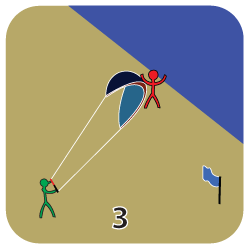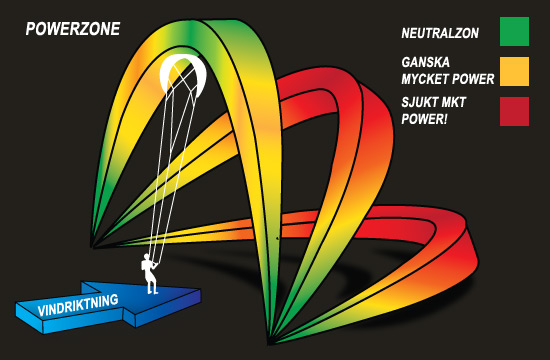Tip! Launch the kite with one hand only on the control bar!
A common sight at the beach is people who launch the kite with both hands on the control bar, something which comes with several disadvantages. If you’re not equipped with gorilla arms then it’s basically impossibe to fully sheet the bar out and you will hence, depending on the length of your arms, get quite some power in the kite as you launch it while it also becomes more responsive due to the stretched lines. You will, to make matters even worse, due to this probably have a bent forward posture (to be able to reach out with your arms), that make you more likely to get yanked out of your grounded stance. In the event that you’re stumbling or slipping then it’s not unlikely that you’ll take one hand of the control bar to catch or fend off a fall. Then what do you think will happen if you only have one hand left at the end of one side of the bar… that’s right, you’ll happen to sheet in one of the bar ends and a nasty flight is a fact!
So launch the kite with one hand only placed in the centre of the control bar (middle finger and forefinger on each side of the centre lines)! Launch the kite like this and you will not only have a much better ability to sheet the bar out, but it will also become harder to steer the kite up too fast). You will at the same time be able to put a lot more weight back and be able to withstand the power from the kite. Last but not least, you’ll get a free hand! What to do with a free hand? Well, you can for instance place the hand resting on the quick release so that you immediately can release it in case something goes wrong!
In this video you can see what will happen if you’re being lofted…








